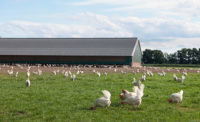Amid low unemployment rates, new facility start-ups and a shrinking pool of available labor, some meat processing facilities are struggling to keep doors open and lines moving. Labor — its availability and cost — has quickly become a top concern for many of the industry’s leading operators. In this highly competitive environment, traditional strategies such as raising wages have been minimally effective, forcing companies to look for creative approaches to recruit and retain workers.
Companies must step up their focus on operational improvements that can improve yields and reduce labor needs. The traditional approach of treating employees as expendable is no longer an option. Labor costs account for an estimated 60 percent to 70 percent of average plant operating expense, and employers are reluctant to make any sizable adjustments.
Competition for workers within the meat processing industry spiked just as domestic unemployment fell to its lowest levels in decades. Operators face even lower labor availability in rural areas. Unfriendly immigration policies and growing competition from the construction, oil and landscaping industries raise serious concerns for the meat processing sector, which has become increasingly reliant on a large immigrant labor pool over the past three decades. Workers facing enforcement action are avoiding employment in heavily monitored meat and poultry processing facilities, preferring to work in less regulated “cash-pay” businesses. Better employment opportunities in many immigrant laborers’ home countries along with a policy-driven shift toward a more highly educated immigrant pool are also tightening the available labor supply.
Recruiting and retaining qualified workers in the meat and poultry processing industries were always difficult, but they are now a perpetual grind. Lost productivity because of record absenteeism and turnover are weighing on returns, and the situation is unlikely to improve in the next three to five years.
In the face of an already tight labor market, U.S. meat and poultry processors are building new plants and adding thousands of new jobs. In recent months, the pork industry has led this growth by adding four new plants requiring thousands of additional workers. Staffing challenges have delayed adding shifts or moving slaughter rates to full capacity. These temporary inefficiencies have challenged existing plants to absorb the record number of slaughter-ready animals this fall and are likely contributing to the recent price weakness. Other plants have foregone labor-intensive but value-enhancing, high-margined steps such as deboning, simply because of a lack of staffing. These imbalances are manageable in the short run, but the economic impact on operations in the long run is unsustainable. The financial strain on suboptimal plant utilization — whether from a geographic, product mix, or labor availability standpoint — will, in our view, force structural change.
The most straightforward solution to the labor challenge is to raise wages to a level that attracts the necessary workforce; however, efforts to retain workers via 10 percent to 20 percent wage increases have been, at best, minimally effective. Instead, short-term inducements to relax policies around absenteeism, tardiness and even drug testing are being investigated. This loss of leverage with workers has created an unpredictable labor pool, a drop in productivity, and, in many cases, an inconsistent product.
Reinvesting in order to attract and retain workers in the animal protein industry is long overdue. Investments like this might not have been necessary in an environment in which workers were easily replaced, but with competition for workers high, the industry’s lack of reinvestment in its workers has taken a toll. These investments could range from:
- providing a better work environment (air conditioning, cafeterias, lounge areas);
- offering free medical services;
- or providing free childcare.
Investments with even better payoffs may include:
- community donations to schools, churches, etc., create a cultural attachment to the area;
- and better training and onboarding of workers and line managers would help retention and should improve yields;
These efforts are quickly becoming a must-have, rather than a nice-to-have, part of doing business.
Ultimately, labor shortages will likely force processors to invest more heavily in automation. Many of the new facilities that have come online or have been announced have already invested heavily in labor-saving technology. Even plant expansions include room to accommodate future automation, when and if it becomes available.
The level of industry commitment to automation varies, and many plants have already invested in the low-hanging fruit: packaging and distribution. The ability of meat and poultry processors to automate can vary widely by species. Automating a chicken plant is much easier than automating a pork plant, and the economics do not always pencil out.
For many years, the primary argument against automation was that processors gave up significantly more in yields than they gained in reduced labor costs. But the math gets remarkably easy as the cost of automation falls and the cost of labor skyrockets.
Non-traditional solutions, such as outsourcing manually intensive operations like deboning to areas with more plentiful labor supplies, could provide a short-term option for companies with a labor imbalance. The logistics of transporting meat products would be challenging. But when we look at the large number of businesses in other labor-intensive industries that have moved offshore, it stands to reason that U.S. meat and poultry processing would consider the option.
Unfortunately this shortfall in labor comes at a very difficult time in the protein cycle. In the next two years, larger protein supplies are expected to pressure margins, restricting the protein industries’ financial ability to offset higher costs. Whether the solution is higher wages, automation, and/or an entirely new business model, we believe that companies unwilling to adjust are likely to find themselves at a structural disadvantage. Ultimately, the labor issue may be an insurmountable financial hurdle for plants without the financial flexibility to seek out solutions. NP





Report Abusive Comment